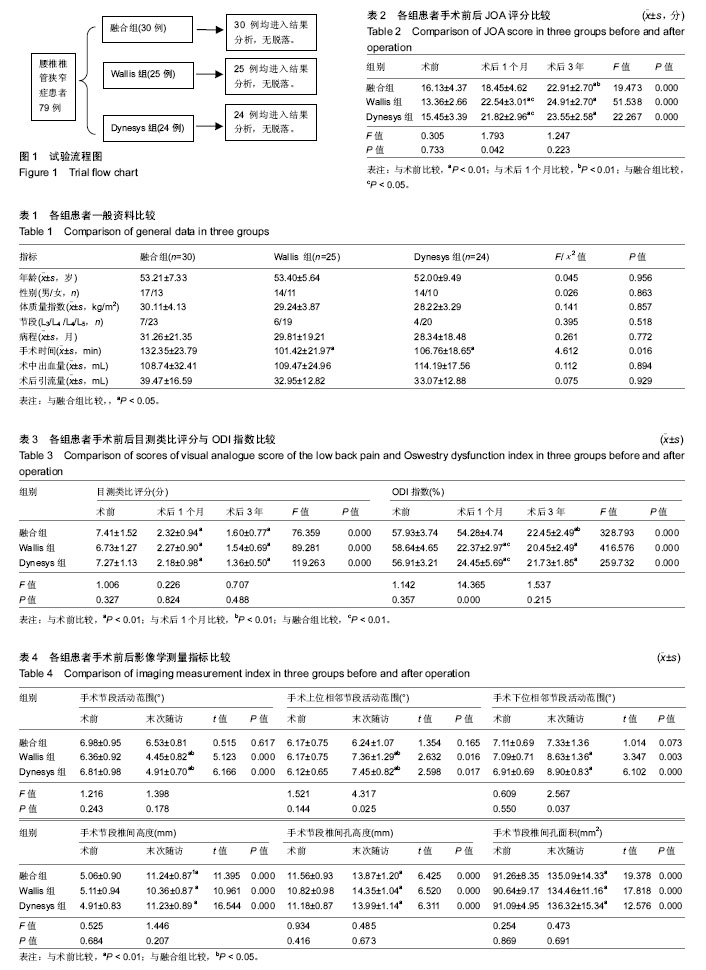| [1] OehmeD,GoldschlagerT,Rosenfeld JV, et al. The role of stem cell therapies in degenerative lumbar spine disease: a review. Neurosurg Rev.2015;38(3):429-445.[2] Kim EJ,ChotaiS,Stonko DP; et al. Patient-reported outcomes after lumbar epidural steroid injection for degenerative spine disease in depressed versus non-depressed patients. Spine J. 2017;17(4):511-517.[3] QuattrocchiCC,GionaA,Di Martino A, et al. Lumbar subcutaneous edema and degenerative spinal disease in patients with low back pain: a retrospective MRI study. Musculoskelet Surg. 2015;99(2):159-163.[4] Kaiser MG,EckJC,Groff MW, et al. Guideline update for the performance of fusion procedures for degenerative disease of the lumbar spine. Part 17: bone growth stimulators as an adjunct for lumbar fusion. J Neurosurg Spine. 2014;21(1): 133-139.[5] NoshchenkoA,HoffeckerL,Lindley EM, et al. Perioperative and long-term clinical outcomes for bone morphogenetic protein versus iliac crest bone graft for lumbar fusion in degenerative disk disease: systematic review with meta-analysis. J Spinal Disord Tech. 2014;27(3):117-135.[6] Jiang YQ,CheW,Wang HR, et al. Minimum 5 year follow-up of multi-segmental lumbar degenerative disease treated with discectomy and the Wallis interspinous device. J ClinNeurosci. 2015;22(7):1144-1149.[7] Segura-TrepichioM,Ferrández-SempereD,López-Prats F, et al. Pedicular dynamic stabilization system. Functional outcomes and implant-related complications for the treatment of degenerative lumbar disc disease with a minimum follow-up of 4 years. Rev Esp Cir OrtopTraumatol. 2014;58(2):85-91.[8] Greiner-Perth R,SellhastN,Perler G, et al. Dynamic posterior stabilization for degenerative lumbar spine disease: a large consecutive case series with long-term follow-up by additional postal survey. Eur Spine J. 2016;25(8):2563-2570.[9] CanbayS,AydinAL,Aktas E, et al. Posterior dynamic stabilization for the treatment of patients with lumbar degenerative disc disease: long-term clinical and radiological results. Turk Neurosurg. 2013;23(2):188-197.[10] Li Z,LiF,Yu S, et al. Two-year follow-up results of the Isobar TTL Semi-Rigid Rod System for the treatment of lumbar degenerative disease. J Clin Neurosci. 2013;20(3):394-399.[11] 李善庆,曾宪林,杨述华. Wallis棘突间动态稳定系统治疗腰椎退行性疾病的中期疗效分析[J].华中科技大学学报(医学版), 2015, 44(3):322-325.[12] McGregor AH,ProbynK,Cro S, et al. Rehabilitation following surgery for lumbar spinal stenosis. A Cochrane review. Spine. 2014;39(13):1044-1054.[13] McKillop AB,CarrollLJ,Battié MC. Depression as a prognostic factor of lumbar spinal stenosis: a systematic review. Spine J. 2014;14(5):837-846.[14] Lawrence MM,Hayek SM. Minimally invasive lumbar decompression: a treatment for lumbar spinal stenosis. Curr Opin Anaesthesiol. 2013;26(5):573-579.[15] Inoue G,MiyagiM,Takaso M. Surgical and nonsurgical treatments for lumbar spinal stenosis. Eur J Orthop Surg Traumatol. 2016;26(7):695-704.[16] Kreiner DS,Shaffer WO,Baisden JL, et al. An evidence-based clinical guideline for the diagnosis and treatment of degenerative lumbar spinal stenosis (update). Spine J. 2013; 13(7):734-743.[17] Tomkins-Lane CC,Haig AJ. A review of activity monitors as a new technology for objectifying function in lumbar spinal stenosis. J Back Musculoskelet Rehabil. 2012;25(3):177-185.[18] Schulte TL,Hurschler C,Haversath M, et al. The effect of dynamic, semi-rigid implants on the range of motion of lumbar motion segments after decompression. Eur Spine J. 2008; 17(8):1057-1065.[19] Hsieh CT,Chang CJ,Su IC, et al. Clinical experiences of dynamic stabilizers: Dynesys and Dynesys top loading system for lumbar spine degenerative disease. Kaohsiung J Med Sci. 2016;32(4):207-215.[20] Yue ZJ,Liu RY,Lu Y, et al. Middle-period curative effect of posterior lumbar intervertebral fusion (PLIF) and interspinous dynamic fixation (Wallis) for treatment of L45 degenerative disease and its influence on adjacent segment degeneration. Eur Rev Med Pharmacol Sci. 2015;19(23):4481-4487.[21] Jiang YQ,CheW,Wang HR, et al. Minimum 5 year follow-up of multi-segmental lumbar degenerative disease treated with discectomy and the Wallis interspinous device. J ClinNeurosci. 2015;22(7):1144-1149.[22] Pan B,ZhangZJ,Lu YS, et al. Experience with the second-generation Wallis interspinous dynamic stabilization device implanted in degenerative lumbar disease: a case series of 50 patients. Turk Neurosurg. 2014;24(5):713-719.[23] Marsh GD,MahirS,Leyte A. A prospective randomised controlled trial to assess the efficacy of dynamic stabilisation of the lumbar spine with the Wallis ligament.Eur Spine J. 2014;23(10):2156-2160.[24] St-Pierre GH,JackA,Siddiqui MM, et al. Nonfusion does not prevent adjacent segment disease: dynesys long-term outcomes with minimum five-year follow-up. Spine. 2016; 41(3):265-273.[25] Li HP,LiF,Guan K, et al. Dynesys dynamic stabilization system for the lumbar degenerative disease: a preliminary report from China.Chin Med J (Engl). 2013;126(22):4265-4269.[26] Haddad B,MakkiD,Konan S, et al. Dynesys dynamic stabilization: less good outcome than lumbar fusion at 4-year follow-up. ActaOrthop Belg. 2013;79(1):97-103.[27] Cakir B,Carazzo C,Schmidt R, et al. Adjacent segment mobility after rigid and semirigid instrumentation of the lumbar spine.Spine. 2009;34(12):1287-1291.[28] Beastall J,Karadimas E,Siddiqui M, et al. The Dynesys lumbar spinal stabilization system: a preliminary report on positional magnetic resonance imaging findings.Spine. 2007;32(6): 685-690.[29] Lee SE,Park SB,Jahng TA, et al. Clinical experience of the dynamic stabilization system for the degenerative spine disease.J Korean Neurosurg Soc. 2008;43(5):221-226.[30] Wang K,Zhu Z,Wang B, et al. Bone resorption during the first year after implantation of a single-segment dynamic interspinous stabilization device and its risk factors. BMC Musculoskelet Disord.2015;16(1):117. |
.jpg)

.jpg)